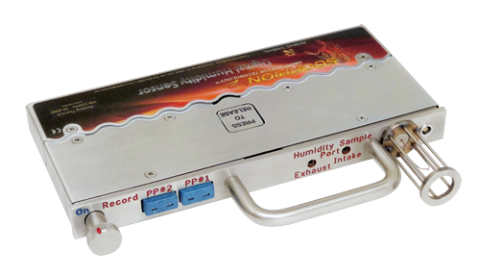Located in Sinking Spring, Pennsylvania, Reading Thermal has measured temperatures in bakery processes for over 25 years. We manufacture the SCORPION® 2 Profiling System and Data Logger, a standard in the baking industry that offers you an easy way to monitor actual oven in-process conditions.
Connecting our various sensors and arrays to the SCORPION® 2 Data Logger and letting them travel through the oven with your products allows the system to capture the four key baking parameters: temperature (including the temperature of both the air and the oven belt surface), humidity, heat flux (energy transfer), and airflow (velocity).
Why It’s Important to Measure Oven Temperature
Oven temperatures cause chemical and physical reactions in batter and dough. Those that are too high or too low can lead to changes in fermentation and humidity levels and undesirable changes in surface texture, coloring, and flavor.
If you manufacture bread, artisan bread, hamburger buns, rolls, biscuits, cakes, or other bread products, you know that several stages depend on temperatures, such as oven-spring, drying/dehydration, and color formation. Too much heat from one direction in the oven can burn the bottoms of the loaves before the crusts brown correctly.
The SCORPION® 2 Temperature Sensor Array measures temperature at the product level, in fixed positions across the conveyor, and perfectly represents what your product experiences over time. Different pluggable sensors are available, including one intended for solid or tight mesh conveyors and one intended for open mesh conveyors.
The sensor array is connected to the SCORPION® 2 Data Logger and then goes through the oven with your product, yielding a precise picture of temperature from side to side and end-to-end.
Measurements of product core-temperature can also be made simultaneously with the product probe inputs on the sensor array. This can make the difference between excellent quality and an under-baked or burnt product.
The Impact of Temperature on Your Baked Goods
The process of fermentation, product swelling, moisture evaporation, flavor development, and surface coloring are all time and temperature-dependent. An oven’s product-level temperature can differentiate the best quality products from wasteful, under-baked, or burnt products. For instance:
- Crusts can become brittle or dry from too little heat.
- Products can be too light in color thanks to too little heat.
- Product structure can be too dense from too little heat.
- The bottoms of loaves can burn before the crusts brown correctly when heat is excessive.
- Moisture will evaporate too rapidly and cause the dough to rise unevenly when heat is excessive.
Get in touch with Reading Thermal to learn more about the importance of temperature measurement for your bakery processes and how the SCORPION® 2 Profiling System can help you make adjustments that will achieve superior products. Contact us online or call us at (610) 678-5890 Ext. 2.

